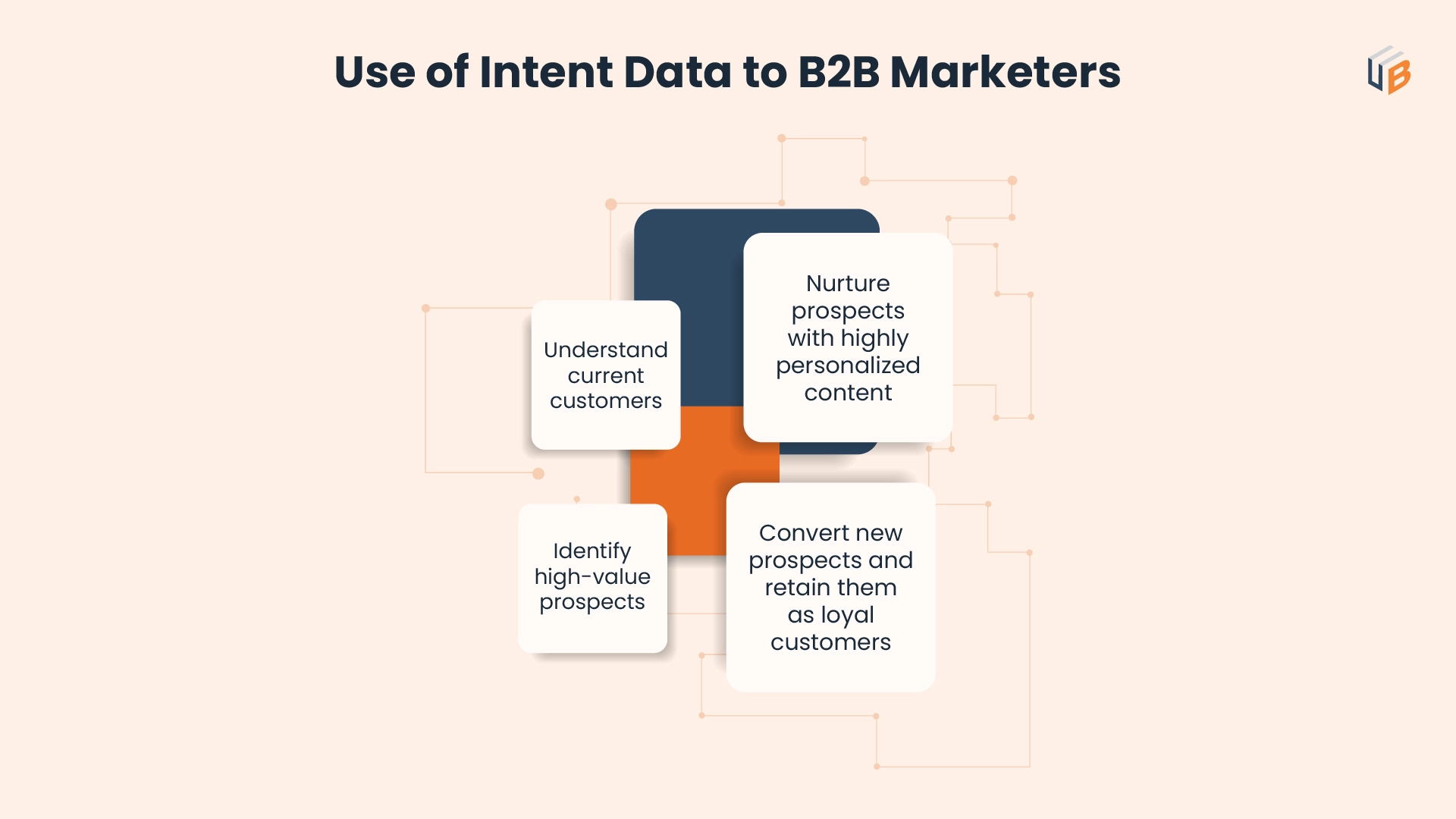
Whether you’re launching a new product or relaunching an existing one, you need a go-to-market strategy to position it in the market. A critical part of developing a go-to-market strategy is understanding your target customers. The most effective way to do this is through the B2B intent data.
With this data, your team can locate prospects who are likely to buy and when they’re likely to do so.
They can use insights from intent data to narrow their focus to prospects that are most interested in your company’s products or services.
Companies track user online behavior to collect intent data. Intent increases anytime a prospect opens a company website or email, visits the blog page, or downloads a digital asset. This explains why 97% of B2B marketers consider intent data invaluable.
In this article, we explore 5 ways intent data can power B2B go-to-market strategies.
But first, What is Intent Data?
B2B intent data refers to any dynamic signal that measures how much interest prospects have in your company’s products or services. It’s a mix of numerous signals that help marketers determine how likely prospects will prefer to buy.
Intent signals are either implicit or explicit. Implicit signals are behavioral. They constitute clues like how much time a visitor spends on your website, social media engagements and return website visits. Explicit signals, on the other hand, are declared by prospects. They include demo requests, search queries, and sign-ups for trials.
Intent data is based on prospects’ consumption of the content you publish online.

5 Ways Intent Data Can Power B2B Go-to-Market Strategies
1. Knowing the Target Audience
Successful implementation of B2B go-to-market strategies largely depends on how well a company knows its target audience. Businesses prepare buyer persons early in the go-to-market planning process to know who their likely buyers are and how best to reach them. Intent data helps B2B marketers determine prospect needs, pain points, or interests, giving them the insights they need to craft buyer personas.
Intent data is also useful in personalizing marketing messages like offers, virtual events, and email campaigns. As they implement the marketing plans in B2B go-to-market strategies, sales and marketing teams can use intent data to prioritize high-value accounts and customize their campaigns to the needs of individual prospects.
2. Determining Prospects Buyer’s Journey
Another way intent data can support enterprises is by helping companies determine where potential customers are in their purchase journey. For example, you can tell prospects are in the awareness stage if they search the internet using keywords that are related to your product or service and visit your website several times.
Additionally, prospects who download content assets such as ebooks or review your website’s pricing page frequently are probably in the decision-making stage. Your marketing team can use intent data to align marketing messages with each stage of the buyers’ journeys and prospects’ unique interests.
3. Optimizing B2B Go-To-Market Strategies
One of the vital roles intent data can play in the launch of new products or services is to optimize B2B go-to-market strategies.
According to Andre Yee, each and every marketer is going online so it is difficult to get noticed. Here personalization is the key. Offer personalized content and deals as they have long proven effective.
60-80% of the buyer journey is hidden or pre-funnel but intent data and ABM can help you proactively target those buyers when they are showing a propensity to purchase.
— Andre Yee, Tiga AI
Some of the areas where businesses can apply go-to-market planning with intent data include:
- Product Development
Intent data provides useful insights about the needs that potential buyers have. This data enables product development teams to evaluate how your product responds to the needs that potential customers have and determine what they need to do to evolve the products to the dynamic buyer needs.
- Content Development
Businesses need content to differentiate their brands in the market, highlight their product or service value proposition, and demonstrate the nuances in their offerings. Insights from intent data can help them determine the content that would capture the attention of their prospects better and drive positive outputs for the company.
4. Maximizing Ad Spending
Marketers can power B2B go-to-market strategies with intent data by focusing on prospects who are actively researching their solutions. Intent data gives marketers valuable insights into the online behavior of prospects.
With this data, marketing teams can leverage prospects’ online behavior to target them with relevant ads. Since they know which accounts are active, marketers can focus their efforts on creating demand from accounts that are interested in their offerings and avoid spending ad resources on disinterested ones.
5. Understanding the Competition
B2B intent data gives marketers a unique opportunity to aggregate intent signals and use them to understand and combat competitors. With intent data, marketers can determine whether prospect accounts are researching other solutions. Where they do, such actions point to interest in competitor offerings.
Intent data also helps marketers in knowing which competitor features prospects are interested in most. These comprehensions gives them an idea of what appeals to prospects in competitor offerings and empower them to overcome the competition. Marketing teams can use this information to develop messages that grab prospects’ attention while combating the interest created by competitors.
In developing B2B go-to-market strategies, knowing how to address purchase objections is critical. For example, if prospects continually eye the lower prices your competitors offer, your team can provide extra information highlighting everything your price covers that your competitor doesn’t.
Final Thoughts
Companies need solid go-to-market strategies to successfully position new products in the market. To craft and implement B2B go-to-market strategies successfully, marketers rely on intent data.
From understanding target accounts and competition better to identifying where prospects are on the buyer’s journey, intent signals empower companies to make informed marketing decisions and take actions that boost the success rate of product launches significantly. Apply intent data in the 5 ways above to make the next product or service launch a success.
Our blog
Latest blog posts
Tool and strategies modern teams need to help their companies grow.

B2B companies must generate leads that are ready to buy their products in order to me...

In the absence of a constant flow of leads, sales teams can't meet their targets and ...

Podcasts and webinars are powerful tools that marketers can use to reach new audience...


